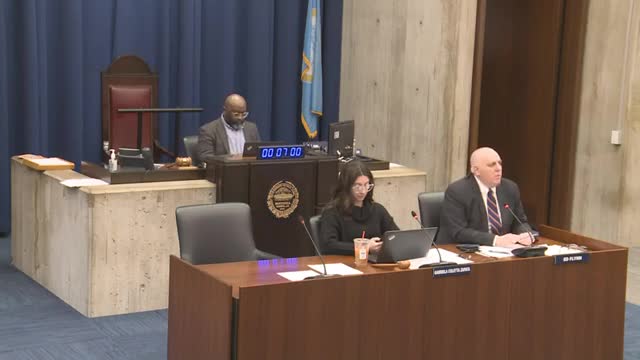Boston addresses tree preservation amid gas leaks and urban infrastructure challenges
May 09, 2025 | Boston City, Suffolk County, Massachusetts
Thanks to Scribe from Workplace AI , all articles about Massachusetts are free for you to enjoy throughout 2025!

This article was created by AI using a video recording of the meeting. It summarizes the key points discussed, but for full details and context, please refer to the video of the full meeting. Link to Full Meeting
As the conversation began, one council member raised a critical issue: the thousands of gas leaks scattered throughout the city. These leaks, though often small, pose significant risks not only to public health but also to the urban tree canopy. “Even a small gas leak is a major incident,” they emphasized, drawing attention to the detrimental effects on trees, which serve as vital indicators of environmental health. The discussion underscored the need for accountability from gas companies to maintain infrastructure and transition towards cleaner energy solutions.
The meeting also spotlighted the resilience of certain tree species, particularly ginkgo trees, which are being planted for their ability to thrive in urban environments. City officials expressed their commitment to monitoring tree health and ensuring that new plantings are well cared for, with plans to replace any that do not survive. However, the conversation quickly shifted to the challenges posed by existing mature trees, particularly in neighborhoods where space is limited.
Concerns were raised about the impact of tree roots on sidewalks and private properties. One council member noted the beauty of old trees in South Boston, but also the practical issues they create, such as buckling sidewalks that hinder accessibility for the elderly and those with disabilities. “We want more trees, but we also have to balance that with public access,” they stated, highlighting the competing interests at play in urban planning.
In response, experts discussed innovative solutions like permeable rubber pavement and Silva Cells—elevated structures designed to accommodate tree roots without damaging infrastructure. These approaches, while potentially costly, could provide a pathway to preserving the city’s beloved trees while ensuring safe and accessible public spaces.
As the meeting concluded, a shared sentiment emerged: the importance of finding creative solutions to protect Boston’s urban forest. The officials and community members left with a renewed commitment to balance environmental stewardship with the needs of residents, ensuring that the city’s green spaces continue to thrive for generations to come.
Converted from Environmental Justice, Resiliency, & Parks on May 9, 2025 meeting on May 09, 2025
Link to Full Meeting
Comments
View full meeting
This article is based on a recent meeting—watch the full video and explore the complete transcript for deeper insights into the discussion.
View full meeting